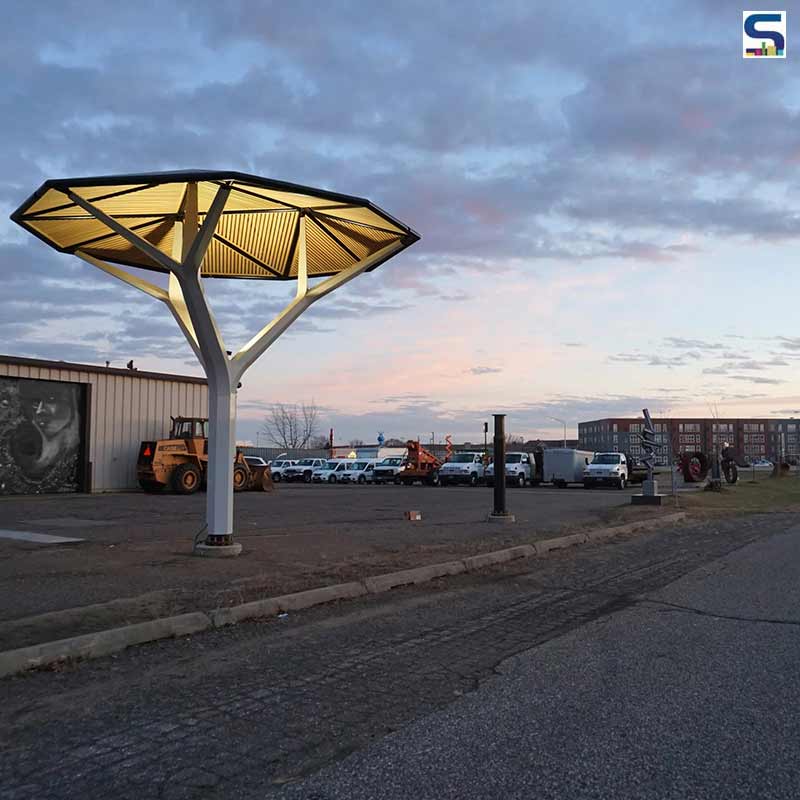
Designer Samuel Wilkinson has designed a solar shelter on a minimal ground level that can collect large amounts of solar energy as well as provide a shelter. The London-based designer’s solar shelter called Nature is based on the idea of creating energy-neutral autonomous public spaces. Here is a detailed report on SURFACES REPORTER (SR).
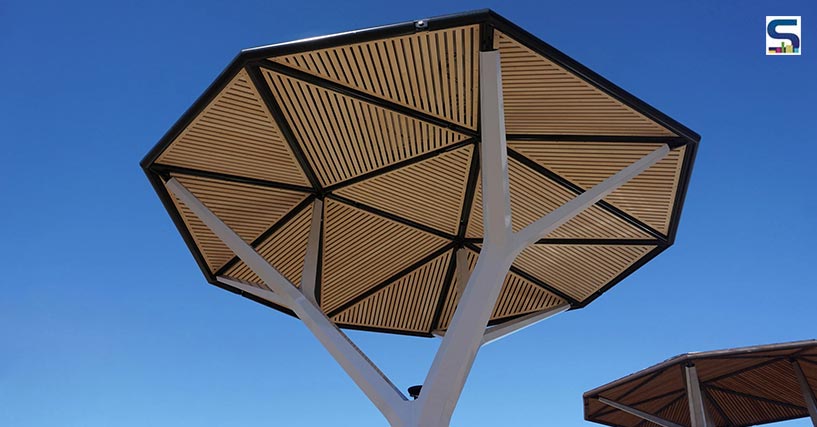 Samuel Wilkinson’s solar shelter called Nature is based on the idea of creating energy-neutral autonomous public spaces.
Samuel Wilkinson’s solar shelter called Nature is based on the idea of creating energy-neutral autonomous public spaces.
Derived from the shape of the African acacia trees, Wilkinson designed the tree-like prototype of Nature. Acacia trees are seen in abundance in the savannahs of eastern and southern Africa. They are large and have an umbrella canopy structure that shelters wildlife from the harsh summers. In the initial stages, Wilkinson looked around natural vegetation for inspiration; something that creates shade and offers shelter as well. That is when he stumbled upon the African acacia trees in the savannah.
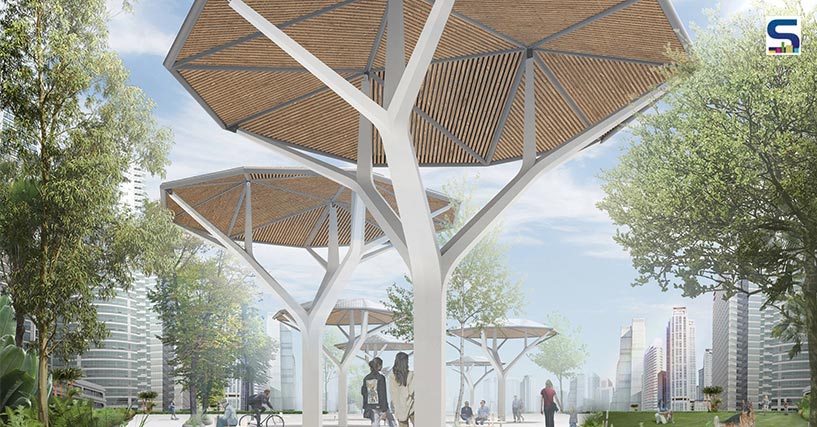 Nature has the capacity to create energy for local streets, furniture lighting and kiosks.
Nature has the capacity to create energy for local streets, furniture lighting and kiosks.
Acacia trees usually grow alone or in small clusters. They have very little vegetation and commonly act as a shelter for farmers and animals from the sun. Observing the structure of an acacia tree which is wide and flat, Wilkinson realised that creating a canopy based on this design would suffice the dual purpose of Nature.
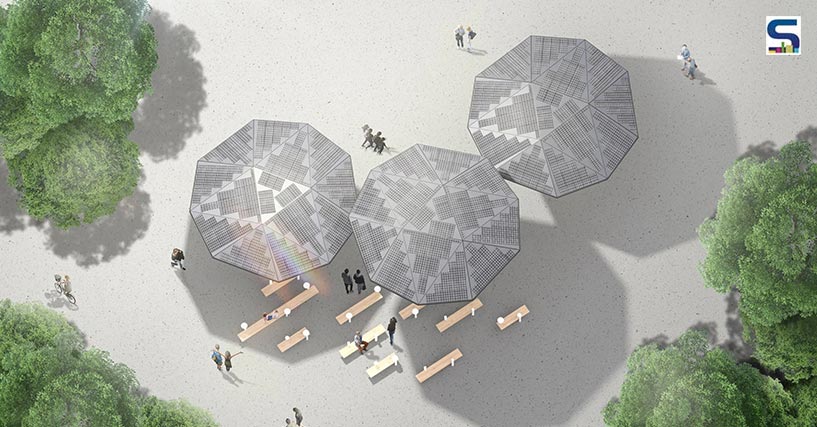 The prototype can function as a singular piece or in a bunch to create autonomous public areas.
The prototype can function as a singular piece or in a bunch to create autonomous public areas.
Nature has the capacity to create energy for local streets, furniture lighting and kiosks. It has been further adapted to set up a charging point for electric cars as well. According to Wilkinson, the prototype can function as a singular piece or in a bunch to create autonomous public areas. The generated power can either be used locally or can be fed back into the grid. It can be also erected at an angle to maximize potential solar gain.
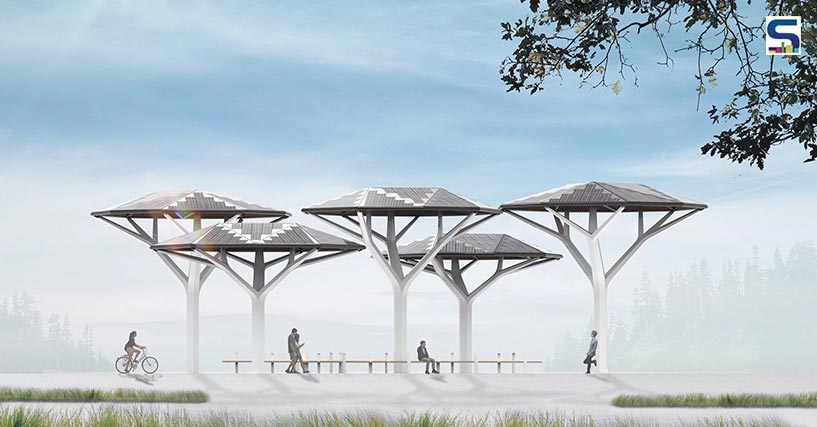 It can be also erected at an angle to maximize potential solar gain.
It can be also erected at an angle to maximize potential solar gain.
Recently, the prototype has been completed in collaboration with US start-up Solar Forma which specializes in fabrication and creates solar products for public urban spaces. For this, nearly 708 monocrystalline silicon solar cells had been embedded into the facetted nonagonal solar paneled roof of the prototype. Its timber roof, spread across 7m wide, provides a large shade, under which people can shelter themselves. The trunk of the prototype, either 6.7m or 5.2m tall, has been made out of a steel frame with aluminium cladding.
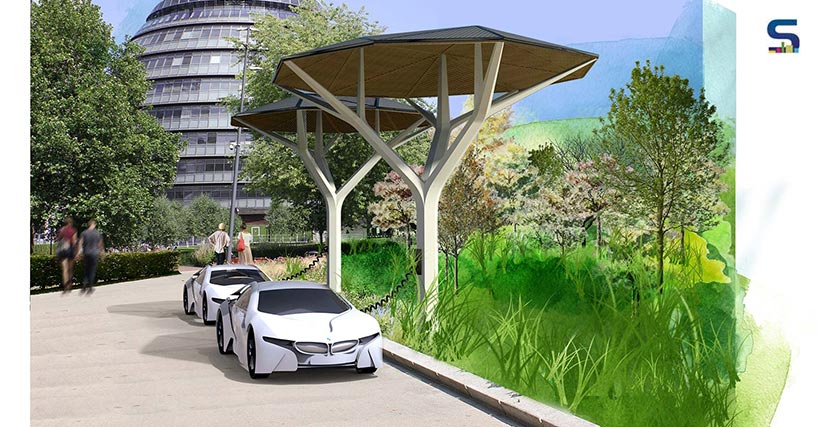 Nearly 708 monocrystalline silicon solar cells had been embedded into the facetted nonagonal solar paneled roof of the prototype.
Nearly 708 monocrystalline silicon solar cells had been embedded into the facetted nonagonal solar paneled roof of the prototype.
The prototype also includes four programmable LED lamps that are concealed within the supporting branches that shine upward into the timber canopy. This allows it to throw light into the surrounding areas at night. The structure can be installed in a day and can withstand winds of up to 160 kilometres per hour.
Image credits: Samuel Wilkinson